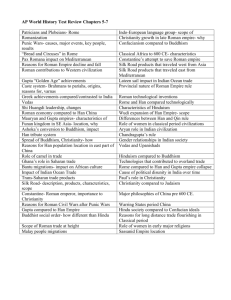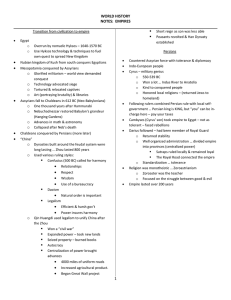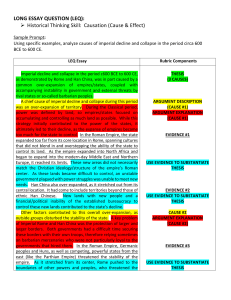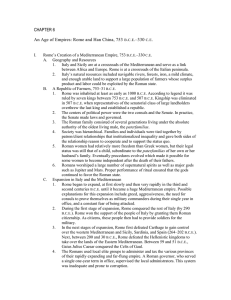Ch 6
advertisement
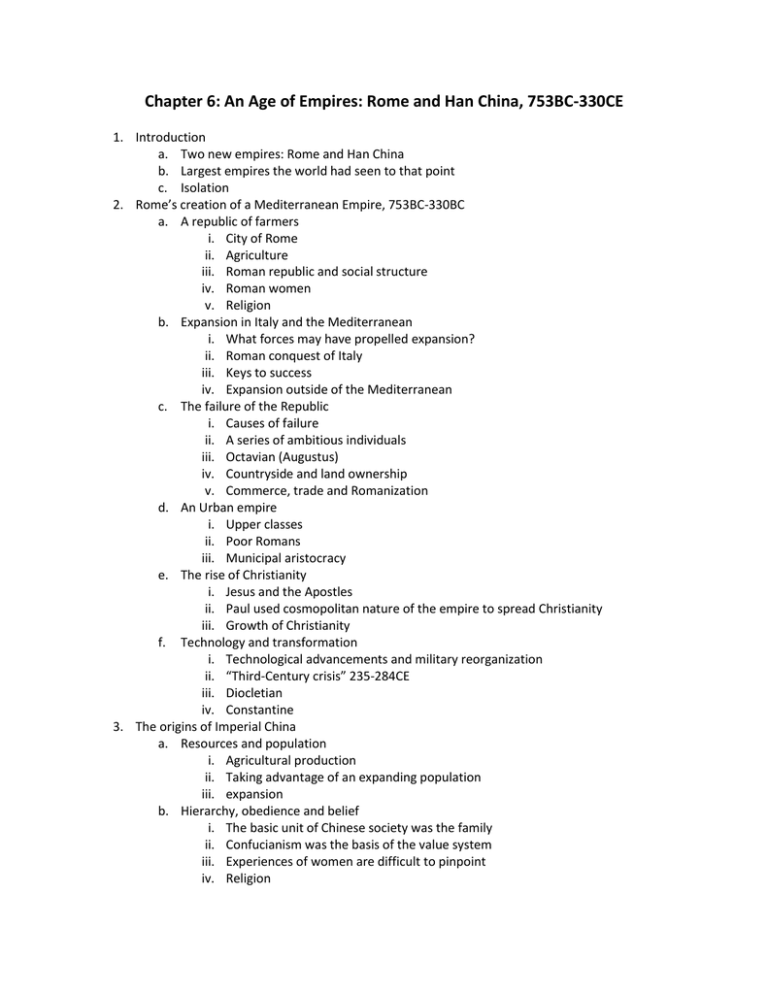
Chapter 6: An Age of Empires: Rome and Han China, 753BC-330CE 1. Introduction a. Two new empires: Rome and Han China b. Largest empires the world had seen to that point c. Isolation 2. Rome’s creation of a Mediterranean Empire, 753BC-330BC a. A republic of farmers i. City of Rome ii. Agriculture iii. Roman republic and social structure iv. Roman women v. Religion b. Expansion in Italy and the Mediterranean i. What forces may have propelled expansion? ii. Roman conquest of Italy iii. Keys to success iv. Expansion outside of the Mediterranean c. The failure of the Republic i. Causes of failure ii. A series of ambitious individuals iii. Octavian (Augustus) iv. Countryside and land ownership v. Commerce, trade and Romanization d. An Urban empire i. Upper classes ii. Poor Romans iii. Municipal aristocracy e. The rise of Christianity i. Jesus and the Apostles ii. Paul used cosmopolitan nature of the empire to spread Christianity iii. Growth of Christianity f. Technology and transformation i. Technological advancements and military reorganization ii. “Third-Century crisis” 235-284CE iii. Diocletian iv. Constantine 3. The origins of Imperial China a. Resources and population i. Agricultural production ii. Taking advantage of an expanding population iii. expansion b. Hierarchy, obedience and belief i. The basic unit of Chinese society was the family ii. Confucianism was the basis of the value system iii. Experiences of women are difficult to pinpoint iv. Religion c. The first Chinese emperor i. The rise of Shi Huangdi ii. A successful totalitarian regime iii. Qin building and standardization d. The Long reign of the Han i. Reconstructing the empire ii. Chang’an iii. “Son of Heaven” and the “Mandate of Heaven” iv. Government organization and the role of the gentry v. Daoism e. Technology and trade i. Metallurgy and weapons ii. Roads and waterways iii. Trade and commerce f. Decline of the Han empire i. Relations between settled Chinese and nomads ii. Xiongnu iii. Factors weakening the Han 4. Imperial Parallels a. Similarities between Rome and Han China i. Family and architecture ii. Expansion and administration iii. Technologies, towns and defense b. Differences i. Chinese attitude towards role of individual in the state ii. Roman family iii. Political and religious ideology in Rome and Han China c. New belief systems i. Christianity and Buddhism 5. Conclusion a. The Qin Empire emerged rapidly b. Early Roman state had no precedents for empire c. Social order and then decline






